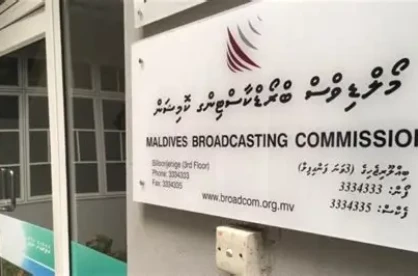Exposing cracks in health care
There are major structural issues in the health care system which hinders longer-term sustainable goals.

Twitter - IGMH
There are major structural issues in the health care system which hinders longer-term sustainable goals.

Twitter - IGMH
On 3 June, Minister of Health Ahmed Naseem acknowledged negligence in the provision of emergency health care leading to the tragic loss of the Maldives' youngest COVID-19 victim, a 10-year-old child, on 2 June. On 7 June, after an initial review and assessment into the case, the Health Emergency Operation Center (HEOC) announced streamlined protocols in the provision of emergency medical assistance, including the establishment of a 24/7 OPD facility for COVID-19 patients. However, many health sector experts, as well as the public, are questioning whether these are mere band aids applies to an already crumbling health system, further exposed by the COVID-19 pandemic.
The Maldives' health care system has undergone significant changes over the years, and developed rapidly, especially with the introduction of the government funded social health insurance scheme – Aasandha.
From 2017 to 2020, over 8 percent of GDP was spent on government health expenditure, which covered more than 70 percent of the total health expenditure of the country. The government spent on average over MVR5.4 billion or 20 percent of total government expenditure on the health sector over the last five years. According to the World Health Organization (WHO), with per capita health expenditures over USDD970, total health expenditure of the Maldives in 2018 was at 9 percent of GDP. This is almost on par with developed countries such as Germany (11 percent), UK (10 percent) and New Zealand (9 percent).
However, there are large disparities in government expenditure on health across the country, with a major proportion of government health expenditure (excluding Dharumavantha Hospital and the Public Sector Investment Programme) being spent on the Malé region, averaging over MVR1 billion over the last five years. Of this, almost 90 percent was spent on the Indira Gandhi Memorial Hospital (IGMH), while the other five regional hospitals were allocated a budget of only MVR140 million per hospital on average.
Consequently, per capita health expenditure in the Malè region in 2021 is estimated to be around MVR8000, compared to close to MVR6,000 per capital in other major regional centers, such as in Addu City and HDh. Khulhudhuffushi. With a lack of adequate infrastructure in these regional hospitals, they mainly provide primary and curative health care, with referrals made to Malè for all other care. As such, IGHM is currently the sole provider of secondary, tertiary and emergency medical services in the public sector.
The majority of public funds, at over 66 percent, is spent on curative care, for both in and outpatients. Many of these services are again only available through the IGMH, especially for inpatient services. In 2018, over 80 percent of inpatient services in the Malè region, and 32 percent of total public sector inpatient services were provided by IGMH, compared to 23 percent by private sector hospitals. In 2018, regional and atoll hospitals provided care for 1,500 inpatients per hospital on average, compared to 15,000 by IGMH, and 14,0000 by the private sector.
Comparatively, almost 70 percent of outpatients are handled by both regional and atoll hospitals, while almost 20 percent visit private sector hospitals, such as the ADK. With a wide range of medical and surgical facilities available, and the comparative ease of obtaining appointments, outpatient visits to ADK are close to the levels seen at the IGMH. There are 65 other private health care facilities in the Maldives, of which 73 percent are located in capital Malé.
The tragic loss of the Maldives' youngest COVD-19 victim came at a time when the Maldives' health care system was stressed to its limit, with the total number of COVID-19 related deaths reaching 113 over the period 1 May to 7 June. The number of deaths seen over this period was higher than the total COVID-19 related deaths seen until then. Consequently, given an alarmingly high number of positive cases and in order to reduce the load on the health care system, the government was forced to impose movement restrictions and controls in Greater Malé. However, this came too little too late and exposed the lack of key infrastructure that should have been in put in place much earlier.
In 2005, the WHO made a recommendation for the establishment of an Emergency Medical Service (EMS) system in the Maldives to deal with disasters and emergencies. It recommended establishing one number, preferably a three digit, toll-free number, to contact in case of emergencies. The Maldives currently has three separate emergency numbers to call, including one for ambulance services from the IGMH.
The establishment of a national call center for medical emergencies, with a single call number, was an election pledge of the current government. This raises the question as to why an extra layer was added in the response to the pandemic with an additional number (1676) to call in case of COVID-19 related medical emergencies. The government could have put in place a one number call system as it was already a part of its pledges, it had ample time to prepare for the pandemic, and it has already spent over MVR1.7 billion towards COVID-19 health and social efforts as of 3 June 2021.
However, according to a health expert this paper spoke to, in order for this system to function effectively, the whole public service health delivery system has to be overhauled. The IGMH's valuable resources should be more focused on the provision of secondary, tertiary and emergency care, leaving primary and initial health care to private sector clinics on a well-regulated, pre-agreed contractual basis.
This key policy is highlighted in the 2016 to 2025 Health Masterplan – the establishment of a General Practice or GP service and a referral model as in countries such as the United Kingdom. Further, with the provision of adequate resources, many NGOs, such as the Diabetes Society of Maldives, may also be engaged in the provision of certain aspects of primary and preventive health care.
More resources also need to be allocated to preventive health care, which currently stands at about 5 percent of government health care expenditure. This will alleviate some of the pressure in the longer term on the secondary and tertiary health care services. With issues identified yet unaddressed over multiple administrations, it is now well past time to bite the bullet and for the government to take concrete, definitive, actions.



